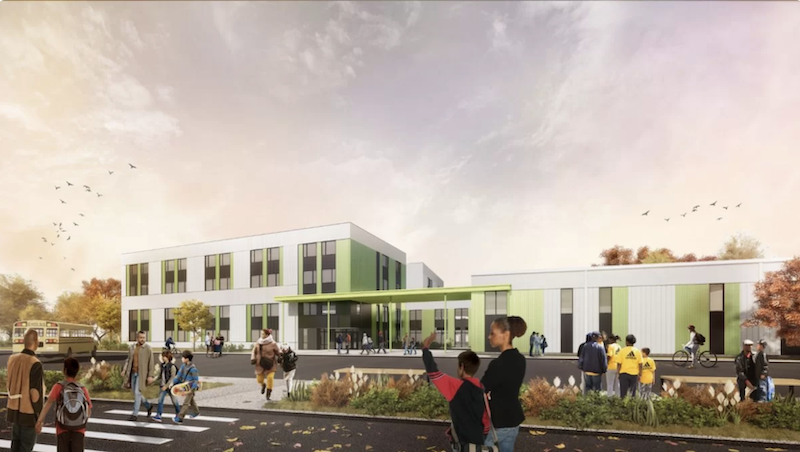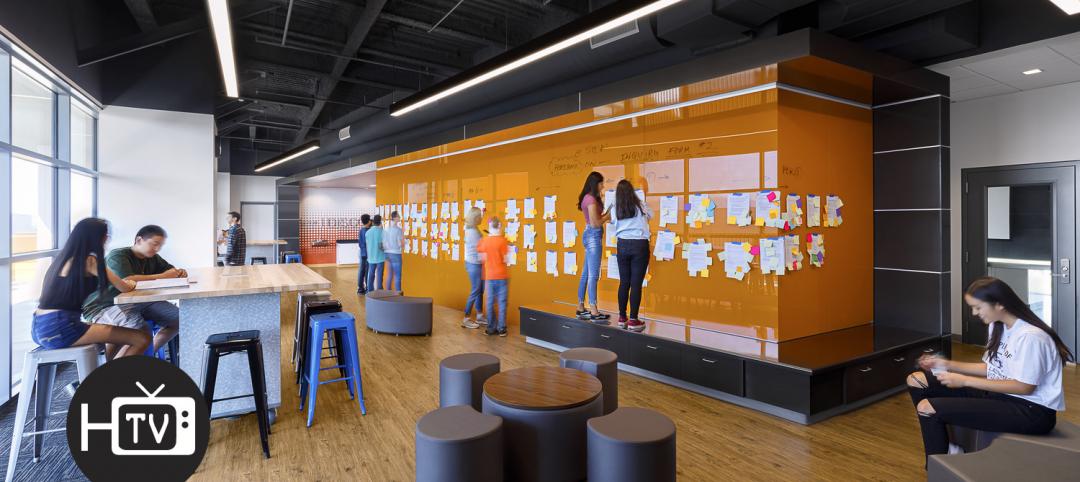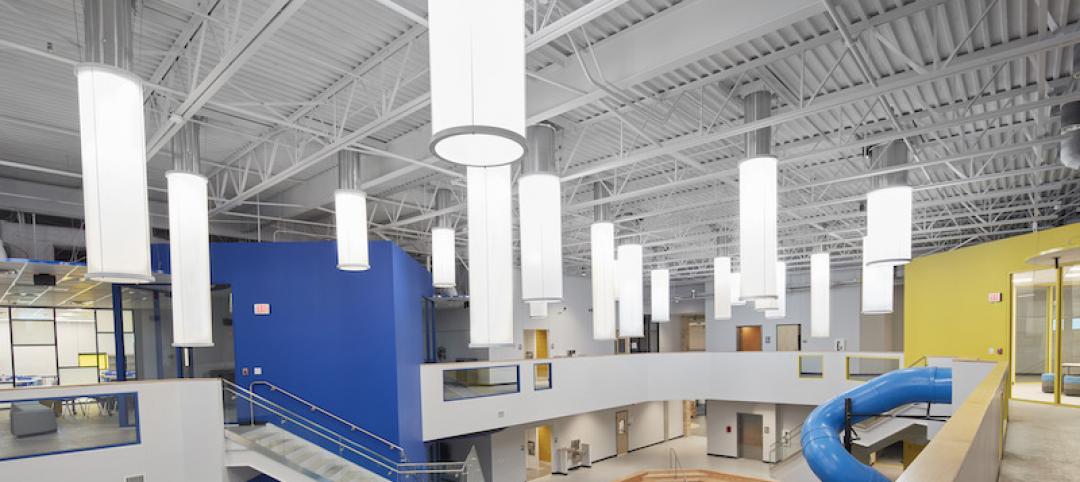Last December, Prince George’s County in Maryland became the first K-12 school district in the nation to partner with the private sector to bundle and finance a six-school delivery program. The public-private consortium included Fengate Capital Management, Gilbane’s development and building companies, designer and architect Stantec, and maintenance services provider Honeywell. JLL was Prince George’s Public School’s financial advisor.
The new schools will be ready for the 2023-24 school year, and add 8,000 new seats across five middle schools and one K-8 school. The school district is expected to save $174 million in deferred maintenance and construction costs.
Financing the construction and renovation of public schools continues to be a major challenge that, in many states, hinges on voters approving bond issues or taxes. For most of America’s 13,000-plus school districts, the private sector is an untapped source for funding.
“At the moment, there is no common definition of a P3 in the U.S., there is no centralized governing body overseeing P3s, and there is an extremely limited breadth of experience in [the] K-12 sector,” states Braisford & Dunlavey, an education planning, development, and management consultant based in Washington, D.C., which has released a free, 40-page guide to K-12 public-private partnerships (P3s).
The guide notes that the National Council of Public-Private Partnerships identifies 18 different legal and financial P3 structures, and each agreement is sui generis to the partnership, or deal. “In K-12, we expect the range of employed structures to be much smaller. Still, each partnership will be unique.”
SEVERAL MOTIVATIONS CITED
The guide cautions that P3s are complex deal structures, and there is no simple pro/con checklist for school districts considering entering into them.
Possible motivations might include accelerating the schedule for delivery of one or more school projects. (That was the primarily factor driving Prince George’s County’s P3.) Reallocating risk and lowering construction costs are two other reasons why P3s might make sense. But school districts must also realize there’s a cost to shifting risk to the private sector in terms of capital lending, legal and development fees, and other compensation.
“P3s aren’t employed for fun,” cautions the guide. “They’re neither simple nor free, and can face a resistant community. If they’re employed, it means there’s a problem that needs solving and it’s best solved with a P3.”
And because K-12 districts typically lack revenue-generating components, the full range of P3s isn’t available to them. “We expect most large-scale projects in K-12 will resemble availability payment agreements/concessionaire agreements, in which the development team designs, builds, finances, operates, and maintains a building that it ‘makes available’ to the district in exchange for availability payments (paid annually, throughout the life of the agreement),” the guide states.
For a P3 to be a viable funding solution, enabling legislation must be in place, the guide states. And for large-scale projects to “pencil out,” the guide recommends that operations and maintenance be key components to most deals.
IS YOUR DISTRICT A GOOD P3 CANDIDATE?
Braisford & Dunlavey states that certain districts fit the profile for considering P3s:
•A large school district facing financially crippling deferred maintenance. “Good news for these projects: Bigger districts tend to have bigger budgets. That can attract developers and other private partners for a large-scale P3. While a smaller project isn’t doomed, it’s less likely.”
•A large school district facing growing enrollment.
•A school district (small or large) with land it can give up, and whose needs it cannot meet on its own. The guide suggests that this type of revenue model is an “easier” P3, but the district still needs to convince the public that this is the best use of the land.
•A school district with a visionary leader who steps up and says, “Enough is enough.” The guide says that projects need champions to navigate approvals, manage stakeholder engagement, and think strategically.
The attributes of any good engagement, according to Braisford & Dunlavey, start with a clear definition of expected outcomes. These pacts also require sufficient time to hash out the deal’s structure and legal details. Stakeholders need to be “true partners” invested in each other’s success, and always honest.
The school district should define the quality of the project’s design and construction, but also be flexible enough to allow its private-sector partners to achieve those parameters.
Related Stories
Contractors | Jul 23, 2021
The aggressive growth of Salas O'Brien, with CEO Darin Anderson
Engineering firm Salas O'Brien has made multiple acquisitions over the past two years to achieve its Be Local Everywhere business model. In this exclusive interview for HorizonTV, BD+C's John Caulfield sits down with the firm's Chairman and CEO, Darin Anderson, to discuss its business model.
K-12 Schools | Jul 9, 2021
LPA Architects' STEM high school post-occupancy evaluation
LPA Architects conducted a post-occupancy evaluation, or POE, of the eSTEM Academy, a new high school specializing in health/medical and design/engineering Career Technical Education, in Eastvale, Calif. The POE helped LPA, the Riverside County Office of Education, and the Corona-Norco Unified School District gain a better understanding of which design innovations—such as movable walls, flex furniture, collaborative spaces, indoor-outdoor activity areas, and a student union—enhanced the education program, and how well students and teachers used these innovations.
K-12 Schools | Jun 29, 2021
A Maryland school system launches a P3 program to speed up K-12 school design, financing, and construction
Gilbane and Stantec are part of a consortium that breaks ground on six new schools this week.
Resiliency | Jun 24, 2021
Oceanographer John Englander talks resiliency and buildings [new on HorizonTV]
New on HorizonTV, oceanographer John Englander discusses his latest book, which warns that, regardless of resilience efforts, sea levels will rise by meters in the coming decades. Adaptation, he says, is the key to future building design and construction.
K-12 Schools | Jun 20, 2021
Los Angeles County issues design guidelines for extending PreK-12 learning to the outdoors
The report covers everything from funding and site prep recommendations to whether large rocks can be used as seating.
Wood | Jun 10, 2021
Three AEC firms launch a mass timber product for quicker school construction
TimberQuest brand seeks to avoid overinvestment in production that has plagued other CLT providers.
Digital Twin | May 24, 2021
Digital twin’s value propositions for the built environment, explained
Ernst & Young’s white paper makes its cases for the technology’s myriad benefits.
Daylighting | Mar 7, 2021
Texas intermediate school lets the sun really shine in
Solatube tubular daylighting devices bring sunlight into the two-story commons/media space for 600 students in grades 3-5 at Sunnyvale Intermediate School.
Market Data | Feb 24, 2021
2021 won’t be a growth year for construction spending, says latest JLL forecast
Predicts second-half improvement toward normalization next year.
Giants 400 | Dec 16, 2020
Download a PDF of all 2020 Giants 400 Rankings
This 70-page PDF features AEC firm rankings across 51 building sectors, disciplines, and specialty services.






![Oceanographer John Englander talks resiliency and buildings [new on HorizonTV] Oceanographer John Englander talks resiliency and buildings [new on HorizonTV]](/sites/default/files/styles/list_big/public/Oceanographer%20John%20Englander%20Talks%20Resiliency%20and%20Buildings%20YT%20new_0.jpg?itok=enJ1TWJ8)










